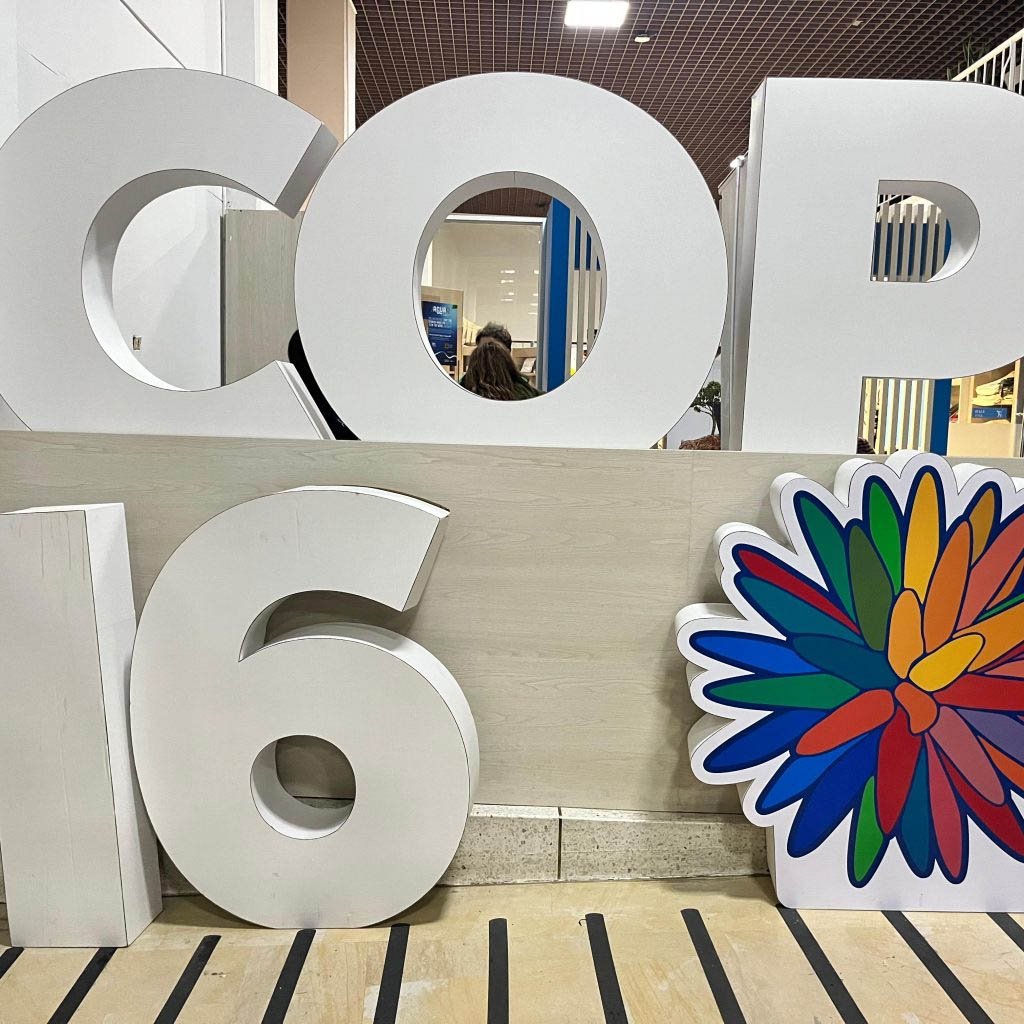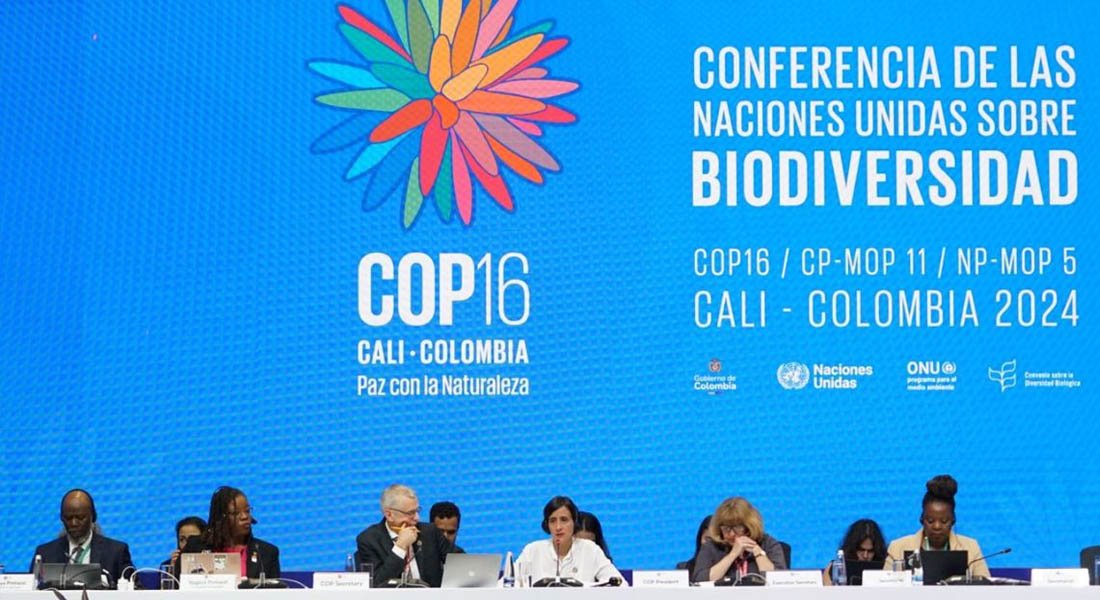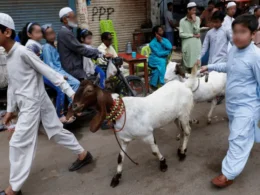Pakistan’s lone delegate at the UN biodiversity conference (COP16) in Cali, Colombia, faces significant challenges to secure funding for the country’s biodiversity goals, highlighting broader hurdles in global biodiversity financing.
With just one official delegate, represented by Naeem Ashraf Raja, director of the Biodiversity Programme at the Ministry of Climate Change, at this crucial biodiversity event, which stretches over two intense weeks from early morning to late at night, it’s like attempting to read every book in a library alone. It’s a race against time for Raja who is navigating numerous group discussions and making sure his presence is felt in some.
In contrast, the West African country of Cameroon, which is nearly half the size of Pakistan, is represented by six delegates, ensuring their participation in crucial working group discussions.
As the COP16 enters its second week, final decisions on financial mechanisms of global biodiversity are imminent. Developing countries are relying heavily on the Global Biodiversity Framework Early Action Support (GBF-EAS) project to update their National Biodiversity Strategies and Action Plans (NBSAPs).
The GBF-EAS project is government-led with joint support from the United Nations Development Programme (UNDP) and the United Nations Environment Programme (UNEP). One of the major requirements for the programme was carrying out a detailed analysis to find out how much money is required against each updated NBSAP target and to identify funding gaps that could be fulfilled nationally and those that needed international aid.
During COP15 in 2022, all countries agreed to the Kunming-Montreal Global Biodiversity Framework (KMGBF). It includes four long-term goals to be achieved by 2050 and 23 action-oriented global targets for 2030.
Funding landscape: complex & contentious
Developed countries fulfil their biodiversity financial commitments through channels like Official Development Finance (ODF) and the Global Biodiversity Framework Fund. However, Raja pointed out that ODF, being mostly grant-based finance, offers limited biodiversity-specific funding.
Developing nations can access a smaller Kunming China Biodiversity Fund of $220 million, for the next ten years, as announced by Huang Runqiu, China’s Minister of Ecology and Environment, on Oct 24 at a press conference. This underscores the complexity of the biodiversity financial landscape and the pressure on delegates to secure vital resources.
KMGBF’s target 19 mandates developed countries to provide $20 billion annually by 2025, rising to $30 billion by 2030, for developing countries to restore biodiversity. To meet this objective, a Global Biodiversity Framework Fund (GBFF) was established in August 2023 under the Global Environment Facility (GEF) but it has received only $250 million so far.
GBFF operations via GEF are contentious. Developing countries, including Pakistan, seek easier access to these funds, which Raja said was currently not possible.
Aaron Vermeulen, Finance Practice Leader at WWF, told The Citizenry that the Green Climate Fund for UN’s convention for Climate Change supports nature-based solution projects such as forest planting and wetland protection, in line with GBFF target 8. It operates independently and doesn’t go through GEF. Vermeulen noted uncertainty about the biodiversity funds in the Green Climate Fund but emphasized that creating a new fund wouldn’t solve developing countries issues with GEF. Instead, WWF supports easing GEF financial mechanism for these countries.

Pakistan’s funding struggles
The GEF manages three United Nations convention funds set up during the 1992 Rio Summit: one each to combat desertification, addressing climate change and protecting biodiversity. Pakistan’s allocation under the biodiversity fund is $5.74 million.
Since Pakistan is still working on a calculations and gap analysis report to update its NBSAP, according to the country’s official delegate Raja, it has so far been unable to determine the exact amount of funding it requires to restore its biodiversity. “However, COP16 is not a forum to put a specific financial demand,” he added in his tired voice and puffy eyes.
So far, 35 countries have submitted their updated NBSAPs on the CBD website and 110 have submitted their updated national targets aligned with the KMGBF.
Role of harmful subsidies
The KMGBF’s Goal D outlines the need for $700 billion annually until 2030 to restore biodiversity. Target 18 aims to close this gap by eliminating $500 billion per year in harmful biodiversity subsidies. For the remaining $200 billion needed for biodiversity conservation, it suggests utilizing all sources, such as domestic, international, public and private.
Raja highlighted that harmful subsidies are critical for many countries. For example, agriculture subsidies on pesticides and fertilizers are necessary to maintain food security, he added.
It is worth noting that these harmful subsidies extend beyond the agriculture sector but to the power sector which supports fossil fuels. The value of these harmful subsidies has exceeded global investments in biodiversity.
Debates on protocol funding
In addition to the ongoing challenges around biodiversity funding, discussions at COP16 also touched upon the financial mechanisms of the Cartagena and Nagoya protocols. On October 25, nations debated changes to the term “ring-fenced funding” for the Cartagena protocol with countries like Switzerland, Brazil and Norway wanted to change it to “increase support” while nations like Zimbabwe, Burkina Faso and Suriname opposed this change, explaining facing difficulty in accessing these funds. An informal group was formed to delve deeper into this issue. Similarly, Brazil suggested that the GEF temporarily fund the Nagoya Protocol, a proposal opposed by the European Union which preferred a permanent role for the GEF.
Adopted in 2000, the Cartagena ProtocolBiosafety to the CBD is an international agreement ensuring the safe handling, transport and use of living modified organisms from modern biotechnology while considering risks to biodiversity and human health.
The Nagoya Protocol, adopted in 2014, ensures that when genetic resources such as plants, animals, or microbes are used in research or product development, the benefits are shared fairly and equitably with the countries or communities providing these resources.
As COP16 nears its end, Pakistan’s biodiversity goals remain uncertain. Raja’s efforts in meetings highlight the bigger challenges of securing funds. With funding requirements yet to be finalized and developed countries falling short, Pakistan’s situation parallels a global struggle: ambitious biodiversity goals versus workable solutions.











